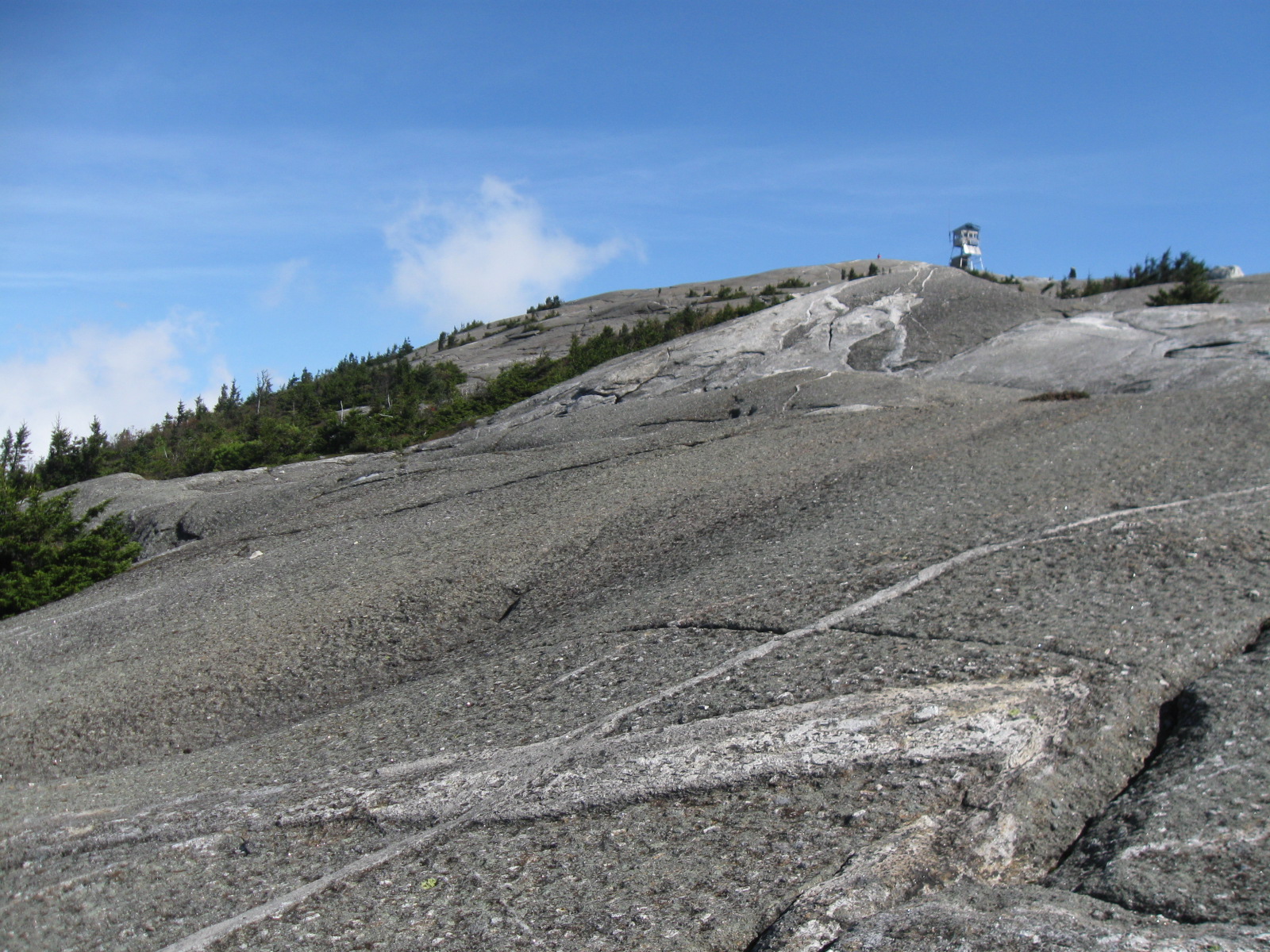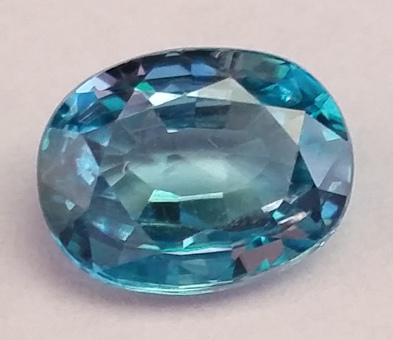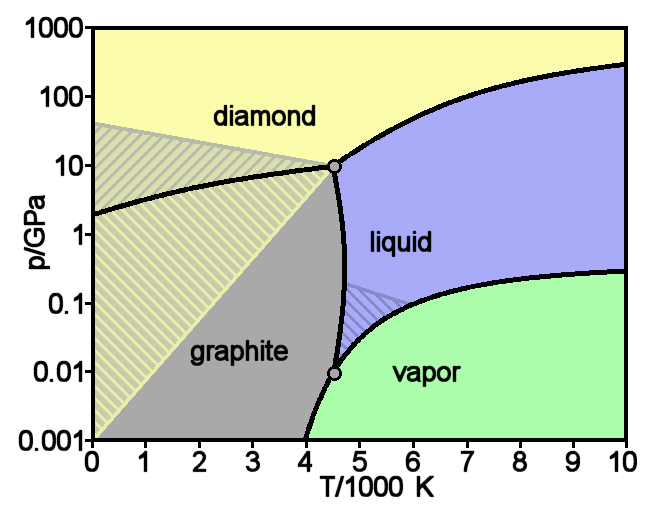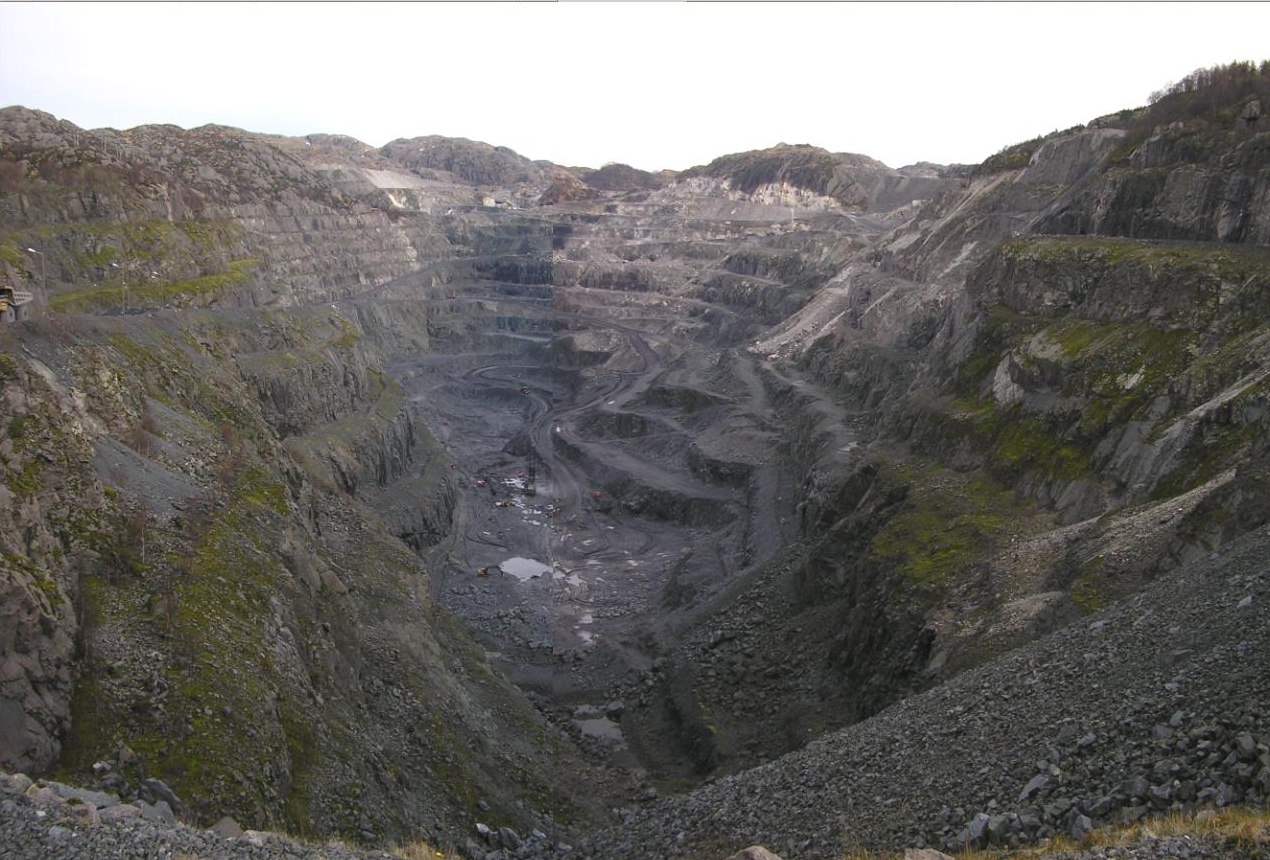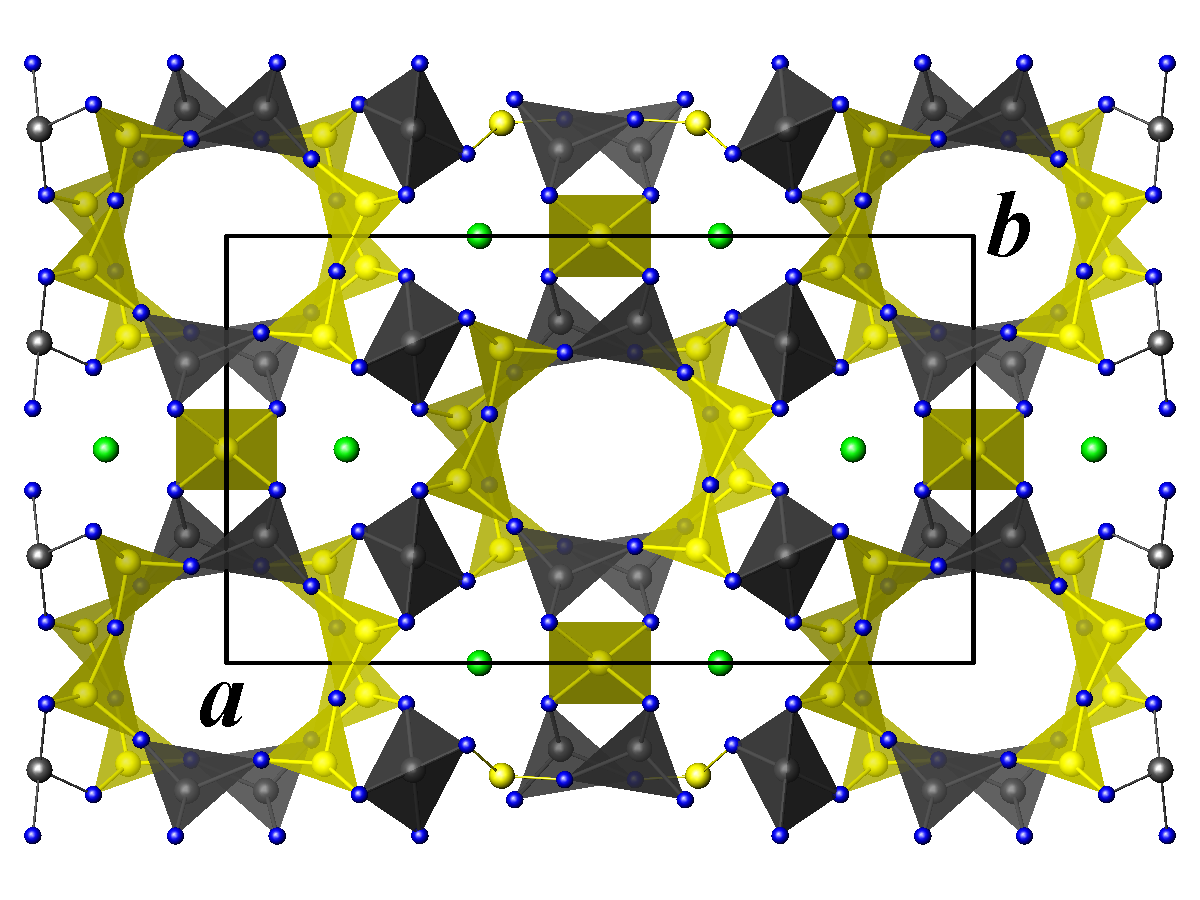|
Cardigan Pluton
The Cardigan Pluton is the most voluminous pluton in the state of New Hampshire, United States. The onset of magmatism was during the Acadian orogeny, and the pluton is part of the Kinsman suite of the New Hampshire Plutonic Series. The pluton is approximately wide by long and on average about thick. It is exposed in west-central New Hampshire along a north-northeast by south-southwest axis, extending from the town of Groton in the north to Dublin in the south. Mount Cardigan, from which the pluton is named, stands near the north end. The pluton ranges in composition from granite to tonalite (S-type) and is likely derived from crustal melting of pelitic rocks. The rocks show foliation indicating they were implaced early in the Acadian Orogeny and subsequently overprinted by later metamorphic events. Minerals in the Cardigan Pluton include large K-feldspar megacrysts and quartz, plagioclase, muscovite, garnet, biotite, and less abundant minerals including sillimanite, cordierite ... [...More Info...] [...Related Items...] OR: [Wikipedia] [Google] [Baidu] |
Cardigan Pluton Mount Cardigan
Cardigan may refer to: Music * The Cardigans, a Swedish pop group * "Cardigan" (song), a 2020 song by Taylor Swift from ''Folklore'' * "Cardigan", a 2020 song by Don Toliver from '' Heaven or Hell'' Places * Cardigan, Victoria, a region in Australia * Cardigan, Prince Edward Island, Canada ** Cardigan (electoral district), an electoral district in Prince Edward Island * Cardigan, Ceredigion, Wales ** Cardigan (UK Parliament constituency) ** Cardigan Castle ** Cardigan Island, a small uninhabited island north of Cardigan, Ceredigion * Mount Cardigan, a mountain in New Hampshire, U.S. Other uses * Cardigan (sweater), a type of knitted open-front garment * ''Cardigan'' (film), a lost 1922 silent film based on a novel by Robert W. Chambers * Earl of Cardigan, a title in the Peerage of England ** James Brudenell, 7th Earl of Cardigan, British general during the Crimean War after whom the sweater is named * SS ''Bury Hill'' or SS ''Cardigan'', a British steamship See also * Cardi ... [...More Info...] [...Related Items...] OR: [Wikipedia] [Google] [Baidu] |
Plagioclase
Plagioclase is a series of tectosilicate (framework silicate) minerals within the feldspar group. Rather than referring to a particular mineral with a specific chemical composition, plagioclase is a continuous solid solution series, more properly known as the plagioclase feldspar series. This was first shown by the German mineralogist Johann Friedrich Christian Hessel (1796–1872) in 1826. The series ranges from albite to anorthite endmembers (with respective compositions NaAlSi3O8 to CaAl2Si2O8), where sodium and calcium atoms can substitute for each other in the mineral's crystal lattice structure. Plagioclase in hand samples is often identified by its polysynthetic crystal twinning or 'record-groove' effect. Plagioclase is a major constituent mineral in the Earth's crust, and is consequently an important diagnostic tool in petrology for identifying the composition, origin and evolution of igneous rocks. Plagioclase is also a major constituent of rock in the hi ... [...More Info...] [...Related Items...] OR: [Wikipedia] [Google] [Baidu] |
Allanite
Allanite (also called orthite) is a sorosilicate group of minerals within the broader epidote group that contain a significant amount of rare-earth elements. The mineral occurs mainly in metamorphosed clay-rich sediments and felsic igneous rocks. It has the general formula A2M3Si3O12 H where the A sites can contain large cations such as Ca2+, Sr2+, and rare-earth elements, and the M sites admit Al3+, Fe3+, Mn3+, Fe2+, or Mg2+ among others. However, a large amount of additional elements, including Th, U, Be, Zr, P, Ba, Cr and others may be present in the mineral. The International Mineralogical Association lists four minerals in the allanite group, each recognized as a unique mineral: allanite-(Ce), allanite-(La), allanite-(Nd), and allanite-(Y), depending on the dominant rare earth present: cerium, lanthanum, neodymium or yttrium. Allanite contains up to 20% rare-earth elements and is a valuable source of them. The inclusion of thorium and other radioactive elements in allanite r ... [...More Info...] [...Related Items...] OR: [Wikipedia] [Google] [Baidu] |
Zircon
Zircon () is a mineral belonging to the group of nesosilicates and is a source of the metal zirconium. Its chemical name is zirconium(IV) silicate, and its corresponding chemical formula is Zr SiO4. An empirical formula showing some of the range of substitution in zircon is (Zr1–y, REEy)(SiO4)1–x(OH)4x–y. Zircon precipitates from silicate melts and has relatively high concentrations of high field strength incompatible elements. For example, hafnium is almost always present in quantities ranging from 1 to 4%. The crystal structure of zircon is tetragonal crystal system. The natural color of zircon varies between colorless, yellow-golden, red, brown, blue, and green. The name derives from the Persian ''zargun'', meaning "gold-hued". This word is corrupted into " jargoon", a term applied to light-colored zircons. The English word "zircon" is derived from ''Zirkon'', which is the German adaptation of this word. Yellow, orange, and red zircon is also known as " hya ... [...More Info...] [...Related Items...] OR: [Wikipedia] [Google] [Baidu] |
Monazite
Monazite is a primarily reddish-brown phosphate mineral that contains rare-earth elements. Due to variability in composition, monazite is considered a group of minerals. The most common species of the group is monazite-(Ce), that is, the cerium-dominant member of the group. It occurs usually in small isolated crystals. It has a hardness of 5.0 to 5.5 on the Mohs scale of mineral hardness and is relatively dense, about 4.6 to 5.7 g/cm3. There are five different most common species of monazite, depending on the relative amounts of the rare earth elements in the mineral: * monazite-(Ce), ( Ce, La, Nd, Th) PO4 (the most common member), * monazite-(La), (La,Ce,Nd)PO4, * monazite-(Nd), (Nd,La,Ce)PO4, * monazite-(Sm), ( Sm, Gd,Ce,Th)PO4, * monazite-(Pr), ( Pr,Ce,Nd,Th)PO4. The elements in parentheses are listed in the order of their relative proportion within the mineral: lanthanum is the most common rare-earth element in monazite-(La), and so forth. Silica (SiO2) is present in ... [...More Info...] [...Related Items...] OR: [Wikipedia] [Google] [Baidu] |
Apatite
Apatite is a group of phosphate minerals, usually hydroxyapatite, fluorapatite and chlorapatite, with high concentrations of OH−, F− and Cl− ions, respectively, in the crystal. The formula of the admixture of the three most common endmembers is written as Ca10( PO4)6(OH,F,Cl)2, and the crystal unit cell formulae of the individual minerals are written as Ca10(PO4)6(OH)2, Ca10(PO4)6F2 and Ca10(PO4)6Cl2. The mineral was named apatite by the German geologist Abraham Gottlob Werner in 1786, although the specific mineral he had described was reclassified as fluorapatite in 1860 by the German mineralogist Karl Friedrich August Rammelsberg. Apatite is often mistaken for other minerals. This tendency is reflected in the mineral's name, which is derived from the Greek word ἀπατάω (apatáō), which means ''to deceive''. Geology Apatite is very common as an accessory mineral in igneous and metamorphic rocks, where it is the most common phosphate mineral. Howe ... [...More Info...] [...Related Items...] OR: [Wikipedia] [Google] [Baidu] |
Graphite
Graphite () is a crystalline form of the element carbon. It consists of stacked layers of graphene. Graphite occurs naturally and is the most stable form of carbon under standard conditions. Synthetic and natural graphite are consumed on large scale (300 kton/year, in 1989) for uses in pencils, lubricants, and electrodes. Under high pressures and temperatures it converts to diamond. It is a weak conductor of heat and electricity. Types and varieties Natural graphite The principal types of natural graphite, each occurring in different types of ore deposits, are * Crystalline small flakes of graphite (or flake graphite) occurs as isolated, flat, plate-like particles with hexagonal edges if unbroken. When broken the edges can be irregular or angular; * Amorphous graphite: very fine flake graphite is sometimes called amorphous; * Lump graphite (or vein graphite) occurs in fissure veins or fractures and appears as massive platy intergrowths of fibrous or acicular cry ... [...More Info...] [...Related Items...] OR: [Wikipedia] [Google] [Baidu] |
Ilmenite
Ilmenite is a titanium-iron oxide mineral with the idealized formula . It is a weakly magnetic black or steel-gray solid. Ilmenite is the most important ore of titanium and the main source of titanium dioxide, which is used in paints, printing inks, fabrics, plastics, paper, sunscreen, food and cosmetics. Structure and properties Ilmenite is a heavy (specific gravity 4.7), moderately hard (Mohs hardness 5.6 to 6), opaque black mineral with a submetallic luster. It is almost always massive, with thick tabular crystals being quite rare. It shows no discernible cleavage, breaking instead with a conchoidal to uneven fracture. Ilmenite crystallizes in the trigonal system with space group ''R''. The ilmenite crystal structure consists of an ordered derivative of the corundum structure; in corundum all cations are identical but in ilmenite Fe2+ and Ti4+ ions occupy alternating layers perpendicular to the trigonal c axis. Pure ilmenite is paramagnetic (showing only very weak attra ... [...More Info...] [...Related Items...] OR: [Wikipedia] [Google] [Baidu] |
Cordierite
Cordierite (mineralogy) or iolite (gemology) is a magnesium iron aluminium cyclosilicate. Iron is almost always present and a solid solution exists between Mg-rich cordierite and Fe-rich sekaninaite with a series formula: to . A high-temperature polymorph exists, indialite, which is isostructural with beryl and has a random distribution of Al in the rings. Name and discovery Cordierite, which was discovered in 1813, in specimens from Níjar, Almería, Spain, is named after the French geologist Louis Cordier (1777–1861). Occurrence Cordierite typically occurs in contact or regional metamorphism of pelitic rocks. It is especially common in hornfels produced by contact metamorphism of pelitic rocks. Two common metamorphic mineral assemblages include sillimanite-cordierite-spinel and cordierite-spinel-plagioclase- orthopyroxene. Other associated minerals include garnet (cordierite-garnet-sillimanite gneisses) and anthophyllite. Cordierite also occurs in some granite ... [...More Info...] [...Related Items...] OR: [Wikipedia] [Google] [Baidu] |
Sillimanite
Sillimanite is an aluminosilicate mineral with the chemical formula Al2SiO5. Sillimanite is named after the American chemist Benjamin Silliman (1779–1864). It was first described in 1824 for an occurrence in Chester, Connecticut. Occurrence Sillimanite is one of three aluminosilicate polymorphs, the other two being andalusite and kyanite. A common variety of sillimanite is known as ''fibrolite'', so named because the mineral appears like a bunch of fibres twisted together when viewed in thin section or even by the naked eye. Both the fibrous and traditional forms of sillimanite are common in metamorphosed sedimentary rocks. It is an index mineral indicating high temperature but variable pressure. Example rocks include gneiss and granulite. It occurs with andalusite, kyanite, potassium feldspar, almandine, cordierite, biotite and quartz in schist, gneiss, hornfels and also rarely in pegmatites. Dumortierite and mullite are similar mineral species found in porcelain ... [...More Info...] [...Related Items...] OR: [Wikipedia] [Google] [Baidu] |
Biotite
Biotite is a common group of phyllosilicate minerals within the mica group, with the approximate chemical formula . It is primarily a solid-solution series between the iron- endmember annite, and the magnesium-endmember phlogopite; more aluminous end-members include siderophyllite and eastonite. Biotite was regarded as a mineral ''species'' by the International Mineralogical Association until 1998, when its status was changed to a mineral ''group''. The term ''biotite'' is still used to describe unanalysed dark micas in the field. Biotite was named by J.F.L. Hausmann in 1847 in honor of the French physicist Jean-Baptiste Biot, who performed early research into the many optical properties of mica. Members of the biotite group are sheet silicates. Iron, magnesium, aluminium, silicon, oxygen, and hydrogen form sheets that are weakly bound together by potassium ions. The term "iron mica" is sometimes used for iron-rich biotite, but the term also refers to a flaky micaceou ... [...More Info...] [...Related Items...] OR: [Wikipedia] [Google] [Baidu] |
Garnet
Garnets () are a group of silicate minerals that have been used since the Bronze Age as gemstones and abrasives. All species of garnets possess similar physical properties and crystal forms, but differ in chemical composition. The different species are pyrope, almandine, spessartine, grossular (varieties of which are hessonite or cinnamon-stone and tsavorite), uvarovite and andradite. The garnets make up two solid solution series: pyrope-almandine-spessartine (pyralspite), with the composition range ; and uvarovite-grossular-andradite (ugrandite), with the composition range . Etymology The word ''garnet'' comes from the 14th-century Middle English word ''gernet'', meaning 'dark red'. It is borrowed from Old French ''grenate'' from Latin ''granatus,'' from ''granum'' ('grain, seed'). This is possibly a reference to ''mela granatum'' or even ''pomum granatum'' (' pomegranate', ''Punica granatum''), a plant whose fruits contain abundant and vivid red seed covers ( arils), ... [...More Info...] [...Related Items...] OR: [Wikipedia] [Google] [Baidu] |
